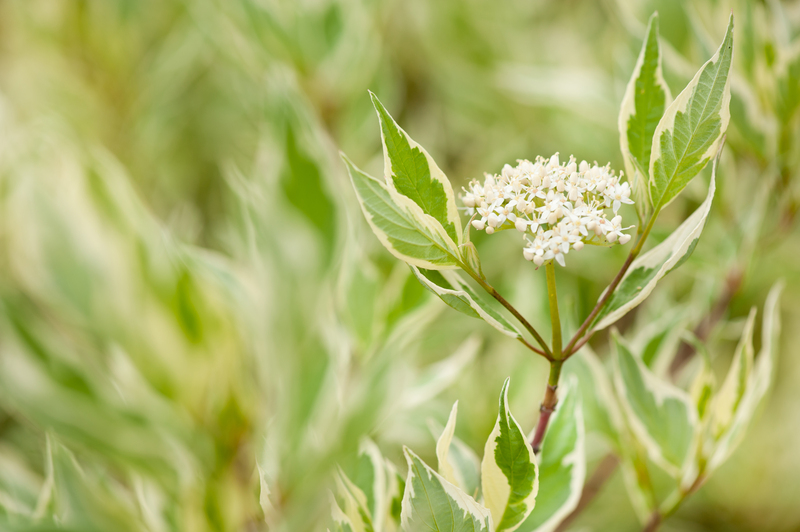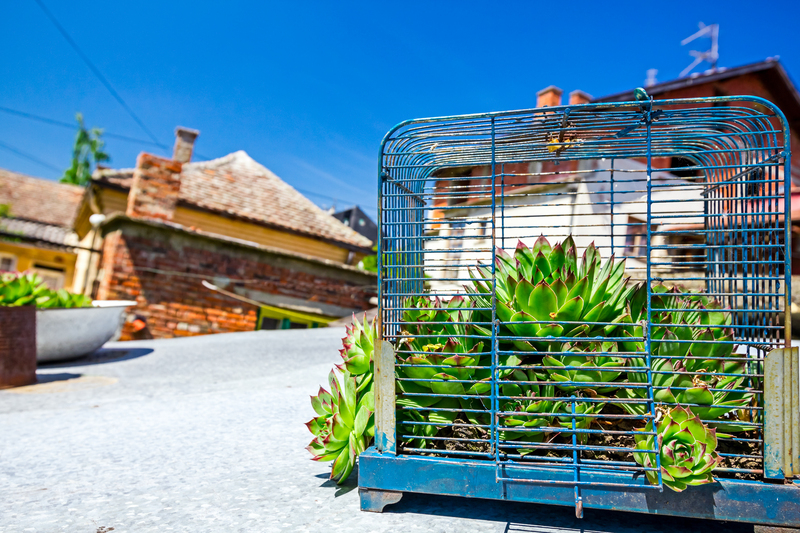Preparing Your Garden for Winter: Tips for Plant Protection
Posted on 31/05/2025
Preparing Your Garden for Winter: Tips for Plant Protection
As the crisp air settles in and the days grow shorter, it's crucial to start planning for the colder months ahead. Preparing your garden for winter not only safeguards your cherished plants, but also lays the foundation for a thriving spring landscape. From protecting delicate blooms to nurturing your soil, these expert strategies will ensure your outdoor haven weathers the season's chill with resilience and vitality.
Why Preparing Your Garden for Winter Matters
Winter can be a challenging time for even the hardiest of plants. Frost, snow, and fluctuating temperatures may all inflict damage that can set your garden back for months. Protecting your plants from winter's harsh elements is essential if you want to maintain a lush, vibrant landscape come spring. By taking proactive steps now, you can minimize losses, reduce spring labor, and ensure your favorite plants return robust and healthy after the freeze.

Understanding Your Garden's Winter Needs
Plants have varying levels of cold tolerance. While some perennials and shrubs are naturally hardy, others might require extra care. It's important to recognize the unique requirements of your landscape before diving into winter garden preparation.
- Know Your Hardiness Zone: Use the USDA Plant Hardiness Zone Map to determine which plants are most at risk in your area.
- Identify Vulnerable Species: Take stock of any newly planted, young, or exotic plants that might need additional protection.
- Observe Microclimates: Areas exposed to wind or less sunlight may freeze faster and stay colder.
Assessing Soil and Drainage
Good soil drainage is vital. Waterlogged roots can freeze and sustain damage during winter thaws and freezes. Check your garden's drainage before the first hard frost. Amending soil with compost or organic matter can improve drainage and nourish your plants for the season ahead.
Essential Steps for Winterizing Your Garden
1. Clean Up and Clear Debris
Removing dead leaves, diseased plant material, and spent annuals helps prevent overwintering pathogens and pests. Garden clean-up is the first line of defense in plant care during winter.
- Rake up fallen leaves and dispose of any diseased foliage.
- Cut back annuals and remove dead stems from perennials.
- Compost healthy plant residue or bag and remove unhealthy materials.
2. Mulch for Insulation
Winter mulching protects roots from extreme temperature fluctuations, prevents soil erosion, and locks in moisture. The best time to apply mulch is after the first frost, when the ground is cold but not yet frozen.
- Spread a 2-4 inch layer of organic mulch (such as straw, shredded bark, or leaves) around perennials and shrubs.
- Leave space around stems to prevent rot.
- Freshen up mulch in early spring to aid recovery and growth.
3. Protecting Tender and Vulnerable Plants
Plant protection in winter calls for extra ingenuity with less hardy or rare varieties.
- Wrap trees and shrubs with burlap to guard against winter burn and wind damage.
- Cover frost-sensitive plants with garden fleece or cloches, especially during sudden cold snaps.
- Lift bulbs and tropicals for indoor storage in a cool, dry place.
4. Watering Before Frost Arrives
Deep watering your plants before the ground freezes helps them withstand dehydrating winter winds and cold spells. Moist soil insulates roots better than dry soil because it retains heat longer.
- Thoroughly water shrubs, trees, and newly planted perennials in late autumn.
- Do not water when the temperature is below freezing.
Special Care Tips for Various Plant Types
Evergreens and Shrubs
Evergreens are susceptible to "desiccation," or drying out, during winter. To protect these plants:
- Wrap with burlap or apply anti-desiccant sprays on warm days.
- Avoid piling snow onto branches, which may cause breakage.
- Mulch the root zones generously.
Perennials and Herbaceous Plants
Most hardy perennials benefit from being cut back after frost kills top growth. However, leaving some stems and seed heads can offer winter interest and provide habitat for beneficial insects.
- Cut back perennials to a few inches above the soil in late fall.
- Leave some ornamental grasses and cone flower seed heads for birds and pollinators.
Bulbs
Winter garden preparation should include the care and handling of bulbs.
- Plant spring-flowering bulbs like tulips, daffodils, and crocus in early fall.
- Dig up tender bulbs (such as dahlias and gladiolus) and store them indoors in peat moss or vermiculite.
Vegetable Gardens
Protecting your winter vegetable plants allows for harvests even in cold months or ensures a quick start in spring.
- Remove spent vegetables and weeds to reduce pest pressure.
- Cover beds with mulch or a cover crop like winter rye to enrich and protect the soil.
- Use cold frames or row covers to grow hardy greens and root crops into winter.
Container Plants
Potted plants are especially vulnerable since their roots aren't insulated by the ground.
- Cluster pots together in a sheltered area, ideally against a south-facing wall.
- Wrap pots in bubble wrap or burlap for added insulation.
- Move sensitive containers indoors if possible.
Maintaining Garden Structures in Winter
Don't overlook the importance of protecting non-living elements in your garden as part of your broader winter preparation efforts.
- Clean and store garden tools to prevent rust or damage.
- Drain hoses and irrigation systems to avoid freeze damage.
- Inspect and repair fences, trellises, and raised beds before snow and ice cause further deterioration.
Supporting Wildlife While Protecting Plants
While it's necessary to prepare your garden for winter by protecting your plants, consider the needs of local wildlife. Birds, insects, and small mammals all play a crucial role in your garden's ecosystem.
- Install feeders and heated birdbaths to support birds during food-scarce months.
- Leave some leaf litter or brush piles as shelter for beneficial insects and small animals.
- Use mesh or fencing to safeguard vulnerable plants from hungry critters like deer and rabbits.
Common Mistakes When Protecting Your Garden in Winter
Even veteran gardeners can overlook key details when preparing plants for winter. *Here are some frequent errors and how to avoid them:*
- Applying mulch too early, which can attract rodents or cause fungal diseases.
- Pruning trees and shrubs too late in fall, leading to winter injury.
- Neglecting to water evergreens, which need moisture even as they go dormant.
- Leaving pots with poor drainage outdoors, causing roots to freeze and die.
- Using plastic wraps on plants, which can trap moisture and encourage rot.
The Payoff: Benefits of Winterizing Your Garden
Investing time and effort into winter garden preparation yields big rewards:
- A better survival rate for perennials, shrubs, and trees.
- Healthier soil enriched by cover crops or organic mulch.
- Reduced pest and disease pressure in spring.
- Earlier and more vigorous spring growth for your plants.
Frequently Asked Questions About Plant Protection in Winter
When should I start preparing my garden for winter?
Begin preparations as soon as temperatures consistently drop below 50?F (10?C). Aim to complete mulching and cleaning tasks before the ground freezes for optimal plant protection.
What is the best mulch for winter plant protection?
Organic materials like straw, shredded bark, pine needles, and compost make excellent choices. These break down over time and enrich the soil for next season's growth.
Should I fertilize my plants just before winter?
Avoid fertilizing in late fall, as it may spur tender new growth that's susceptible to frost damage. Wait until spring to resume feeding your plants.
How do I prevent frost damage on sensitive plants?
Use cloches, frost blankets, or temporary covers during cold snaps. For small plants, overturned flower pots or even cardboard boxes can offer emergency protection overnight.
Is it necessary to protect all plants from the cold?
Native, established, and cold-hardy species usually withstand winter with little intervention. Focus your efforts on new plantings, young specimens, and those known to be vulnerable to cold.

Conclusion: Embrace Winter as a Season of Preparation
Preparing your garden for winter and protecting your plants is more than a chore--it's an investment in your landscape's future beauty and resilience. With thoughtful planning and the right techniques, your garden will emerge from winter's grip thrumming with life and ready for the growing season ahead.
Don't wait until frost is on your doorstep. Start winterizing your garden today! Your plants will thank you in the brilliant colors of spring.

